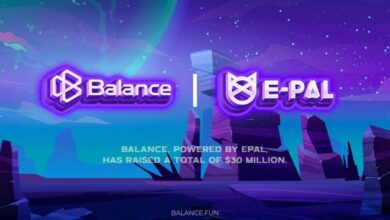The Impact of Tokenization on Asset Management and Investment Strategies

Tokenization, the process of converting ownership rights of an asset into a digital token on a blockchain, is revolutionizing the world of asset management and investment strategies. By creating a digital representation of assets such as real estate, commodities, or even art, tokenization is democratizing access to investments, enhancing liquidity, and enabling more efficient portfolio management. This article delves into the profound impact of tokenization on asset management and investment strategies, examining its benefits, challenges, and future prospects.
What is Tokenization?
Tokenization involves the creation of digital tokens that represent ownership or a stake in a physical or digital asset. These tokens are stored on a blockchain, a decentralized and immutable ledger, ensuring transparency and security. By breaking down assets into smaller, tradable units, tokenization makes it possible for a broader audience to invest in high-value assets. This process is transforming the way assets are managed and traded, offering new opportunities for investors and asset managers alike.
Benefits of Tokenization in Asset Management
Increased Liquidity
One of the most significant advantages of tokenization is the increase in liquidity it brings to traditionally illiquid assets. Real estate, fine art, and other high-value assets have historically been difficult to trade quickly . This fractional ownership model opens up new avenues for investors, providing them with the flexibility to liquidate their investments more readily.
Democratization of Investment Opportunities
Tokenization is breaking down barriers to entry in the investment world. Traditionally, only wealthy individuals and institutional investors had access to high-value assets. With tokenization, even small investors can own a fraction of an expensive asset. This democratization is fostering greater inclusivity in the investment landscape, enabling more people to participate in wealth-building opportunities that were previously out of reach.
Enhanced Transparency and Security
Blockchain technology, the backbone of tokenization, ensures that all transactions are recorded on a public ledger. This transparency reduces the risk of fraud and enhances trust among investors. Additionally, the decentralized nature of blockchain technology means that no single entity has control over the entire network, further enhancing security. Smart contracts, which are self-executing contracts with the terms directly written into code, also play a crucial role in automating and enforcing the rules of tokenized assets, reducing the need for intermediaries and decreasing the likelihood of disputes.
Efficient Portfolio Management
Tokenization enables more efficient portfolio management by allowing investors to diversify their holdings across a wide range of assets. The ability to own fractions of multiple assets means that investors can spread their risk more effectively. This diversification can lead to more stable returns and a reduction in overall portfolio risk. Furthermore, the digital nature of tokenized assets allows for real-time tracking and analysis, providing investors with up-to-date information on their investments.
Challenges of Tokenization
Regulatory Uncertainty
Despite its numerous benefits, tokenization faces significant regulatory challenges. The legal framework surrounding tokenized assets is still evolving, with different jurisdictions adopting varying approaches to regulation. This lack of standardization can create uncertainty for investors and asset managers, potentially hindering the widespread adoption of tokenization. Clear and consistent regulatory guidelines are essential to fostering confidence and ensuring the long-term success of tokenized asset markets.
Technological Hurdles
The technology underpinning tokenization, while innovative, is still in its nascent stages. Issues such as scalability, interoperability, and the security of blockchain networks need to be addressed to ensure the seamless operation of tokenized markets. Additionally, the complexity of integrating tokenization platforms with existing financial systems can pose challenges for asset managers looking to adopt this new technology.
Market Acceptance
The concept of tokenization is still relatively new, and gaining widespread acceptance among investors and asset managers will take time. Education and awareness are crucial to driving adoption.
Impact on Investment Strategies
Diversification and Risk Management
Tokenization is fundamentally changing the way investors approach diversification and risk management. By enabling fractional ownership of assets, tokenization allows investors to spread their investments across a broader range of asset classes, including those that were previously inaccessible. This greater diversification can lead to more balanced portfolios and reduced exposure to any single asset or market.
Access to New Asset Classes
Tokenization is opening up access to new and alternative asset classes that were traditionally difficult to invest in. For example, investors can now own a fraction of a luxury property, a piece of fine art, or a stake in a private equity fund. These new investment opportunities can provide additional sources of returns and help investors achieve better risk-adjusted performance.
Enhanced Liquidity Management
The liquidity of tokenized assets allows investors to manage their portfolios more dynamically. Unlike traditional assets, which can take days or even weeks to trade, tokenized assets can be bought and sold quickly on digital exchanges. This enhanced liquidity enables investors to respond more rapidly to market changes and rebalance their portfolios as needed.
Cost Efficiency
Tokenization can reduce the costs associated with traditional asset management. The use of blockchain technology eliminates the need for intermediaries, such as brokers and custodians, reducing transaction fees and administrative costs. Smart contracts automate many of the processes involved in managing and trading assets, further increasing efficiency and lowering costs.
Future Prospects of Tokenization
Mainstream Adoption
As the technology matures and regulatory frameworks become more defined, tokenization is poised for mainstream adoption. The potential for increased liquidity, democratized investment opportunities, and enhanced transparency makes tokenization an attractive proposition for both investors and asset managers. As more institutions and individuals recognize the benefits of tokenization, the market for tokenized assets is expected to grow significantly.
Integration with Traditional Financial Systems
The future of tokenization lies in its integration with traditional financial systems. Efforts are already underway to develop infrastructure that supports the seamless exchange of tokenized assets within existing financial markets. This integration will further enhance the accessibility and liquidity of tokenized assets, making them a more viable option for a broader range of investors.
Innovation in Asset Management
Tokenization is driving innovation in asset management, leading to the development of new financial products and services. For example, tokenized funds and investment platforms are emerging, offering investors a convenient way to access and manage tokenized assets. These innovations are likely to continue as the technology evolves and more players enter the market.
Conclusion
Tokenization is transforming asset management and investment strategies by increasing liquidity, democratizing access to high-value assets, enhancing transparency, and enabling more efficient portfolio management. Despite challenges related to regulation, technology, and market acceptance, the potential benefits of tokenization are driving its adoption across the investment landscape. The evolution of tokenization represents a significant step towards a more inclusive, efficient, and innovative financial ecosystem.





